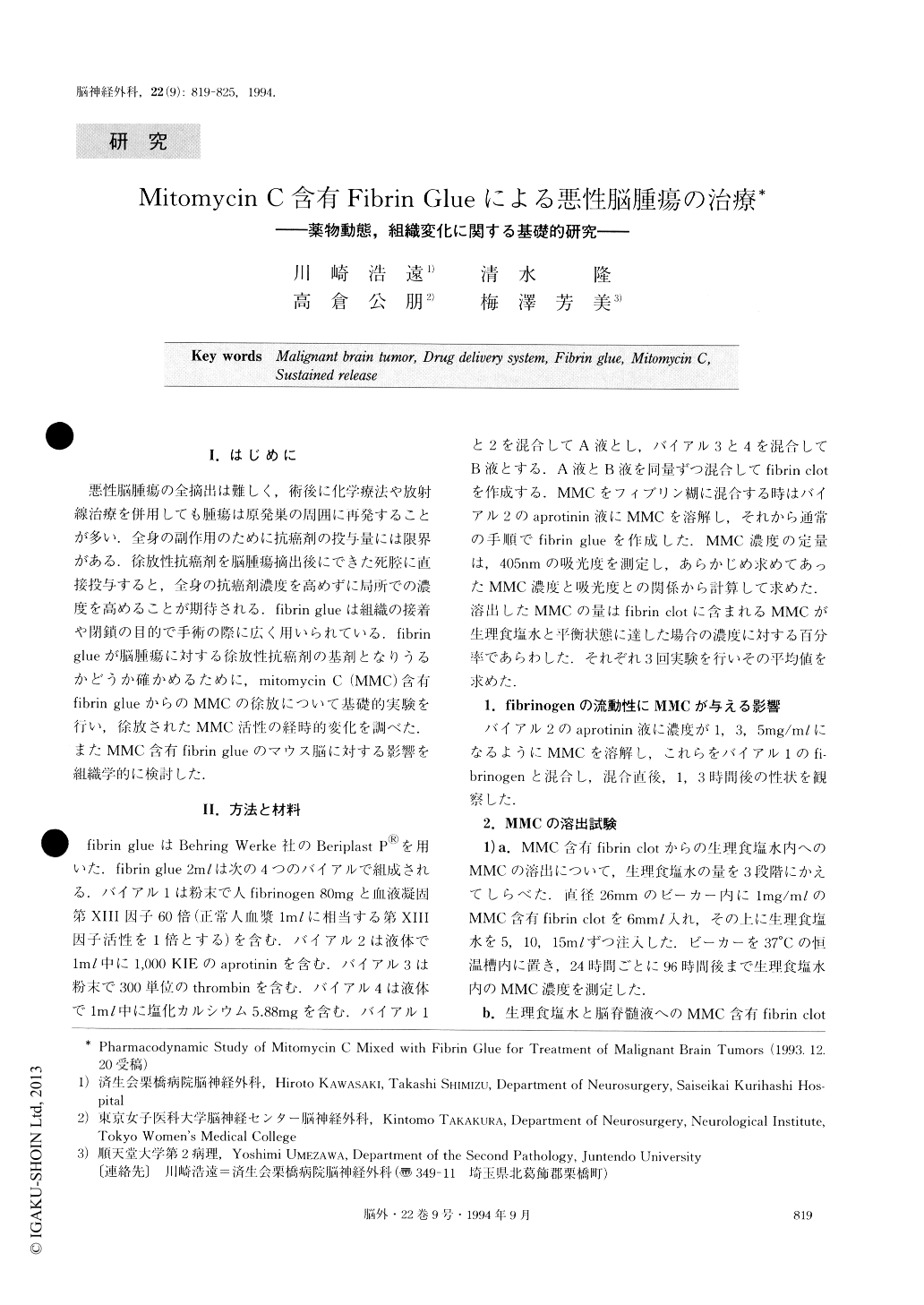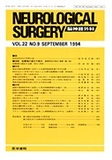Japanese
English
- 有料閲覧
- Abstract 文献概要
- 1ページ目 Look Inside
I.はじめに
悪性脳腫瘍の全摘出は難しく,術後に化学療法や放射線治療を併用しても腫瘍は原発巣の周囲に再発することが多い.全身の副作用のために抗癌剤の投与量には限界がある.徐放性抗癌剤を脳腫瘍摘出後にできた死腔に直接投与すると,全身の抗癌剤濃度を高めずに局所での濃度を高めることが期待される.fibrin glueは組織の接着や閉鎖の目的で手術の際に広く用いられている,fibrin glueが脳腫瘍に対する徐放性抗癌剤の基剤となりうるかどうか確かめるために,mitomycin C(MMC)含有fibrin glueからのMMCの徐放について基礎的実験を行い,徐放されたMMC活性の経時的変化を調べた.またMMC含有fibrin glueのマウス脳に対する影響を組織学的に検討した.
The chemotherapy for malignant brain tumors cre-ates two major problems to be solved viz systemic toxicity and interference by the blood brain barrier. The interstitial chemotherapy with sustained release of anticancer drugs has been widely investigated to over-come these problems. The Mitomycin C (MMC)-contained fibrin glue might be a promising candidate for use in local chemotherapy of malignant brain tumors. We investigated pharmacokinetics of the MMC-contained fibrin clot in vitro, activity of the MMC for the cultured glioma cell line, and its effect on the normal mouse brain.
The MMC concentration in saline was measured up to 96 hours after the placement of fibrin glue into 5, 10 and 15 ml of saline. Then we periodically replaced the saline to keep the concentration difference of the MMC between the saline and the fibrin clot and evaluated the dissolution of the MMC for 288 hours. The potency of the MMC to suppress the rat glioma cell line was mea-sured after being dissolved from the MMC-contained fibrin clot. The effects of the MMC-contained fibrin clot were histologically evaluated. The MMC-contained fibrin glue, the MMC solution and the fibrin glue were separately injected into the mouse brains. Mice were sacrificed 24, 72, 168 and 336 hours after the injection and brains were examined with photomicroscopy.
The MMC was released into the saline rapidly within 24 hours then gradually released until 96 hours had elapsed. Total amounts of the dissolved MMC were proportional to the amounts in the saline. When the saline was replaced every 48 hours, twice as much the MMC was released compared with the amount when it was not replaced. Potency of the MMC did not change after dissolution from the fibrin clot. The injection of the MMC-contained fibrin glue caused necrosis in a li-mited area and the inflammatory reaction persisted for more than 168 hours. The injection of the MMC solu-tion resulted in wider necrosis and the inflammatory reaction subsided earlier. The fibrin clot did not affect the mouse brain.
It is concluded that the fibrin clot releases the active MMC in a sustained fashion and has little adverse effect on the mouse brain. The MMC-contained fibrin glue might be valuable in the treatment of patients with malignant brain tumors.

Copyright © 1994, Igaku-Shoin Ltd. All rights reserved.


